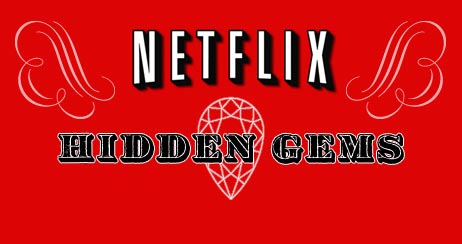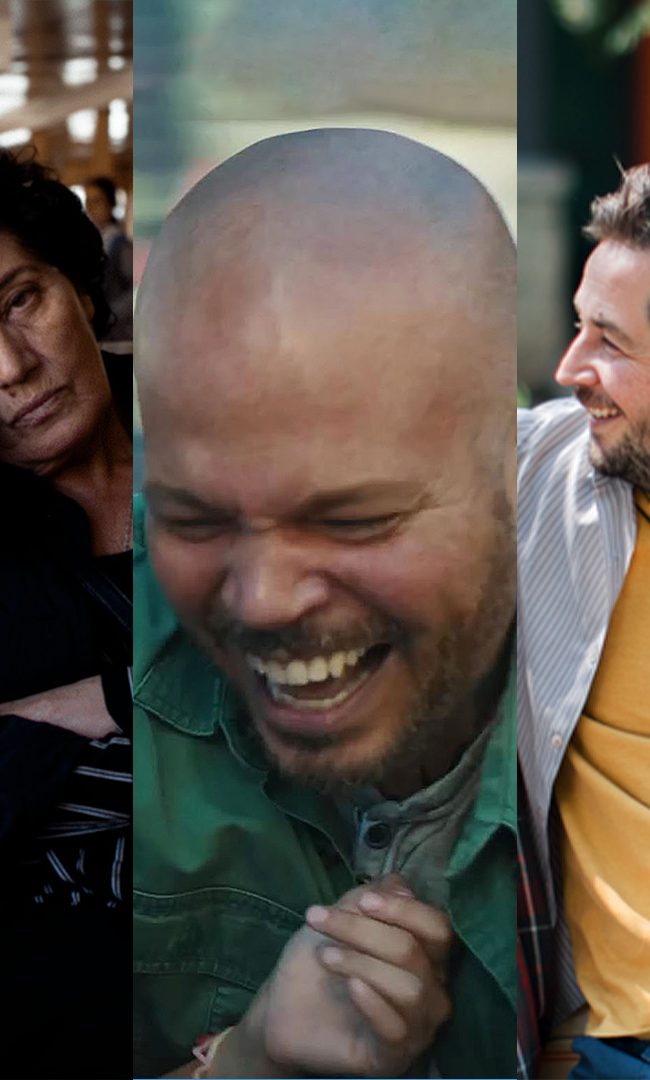NETFLIX HIDDEN GEMS: Issue #3
Another month is gone. Another month is here. Time to re-up y’all’s queues:

***ISSUE #3: OCTOBER ‘09***
Forbidden Lie$ (2007) — Australian filmmaker Anna Broinowski and her subject Norma Khouri take us on a head-spinning romp of fact and fiction in this fascinating documentary. Khouri, a compulsive liar, is determined to salvage her reputation when her best-selling bookForbidden Love (published in the US as Honor Lost) about her best friend’s (purported) honor killing at the hands of her own father in Jordan is exposed as a hoax a year after publication. To say that the director plays with form and content with extraordinary innovation would be an understatement. You will also never forget Norma Khouri, a con artist and femme fatale par excellence, a woman who even took Broinowski for a ride. If there was a category for Best Performance by a Documentary Subject, Khouri would certainly walk away with the prize. Then she’d sell it to the highest bidder. The film, deeply critical of Jordanian culture, was surprisingly a top prize-winner at the ‘08 Al-Jazeera Film Festival. (Nota bene: see 3 Rooms) (Pamela Cohn)
May (2003) — The “quirky indie about an isolated awkward person lookin’ for love” genre is getting real old, real fast. Yet Lucky McKee’s May avoids those pitfalls. McKee’s sensitive character study is about a lonely goth girl with a lazy eye and only one friend—her childhood doll. Things take an unexpected turn when May (Angela Bettis, a favorite of mine—she’s like if Zooey Deschanel and Carol Kane merged) starts chopping up potential pals. Look out for awesome supporting performances by Anna Faris and Jeremy Sisto as victims of her wrath. (Lena Dunham)
Girl With Green Eyes (1964) — In celebration of the publication of Farber On Film: The Complete Film Writing Of Manny Farber, I offerGirl With Green Eyes as a unique opportunity to find your way into Farber’s mind and see a film you may otherwise have missed. In a world full of celebrity ass kissing and sterilized film writing, you may be shocked to read something as hilariously cruel as Farber’s takedown of young actress Rita Tushingham in Pish-Tush, but boy does it pop off the page: “An even worse example of the megalomaniac star who can make the simplest action have as many syllables as her name is Rita Tushingham… Tossing her head about like a basketball and nasally, toothily spewing scorn at her high school teacher, she seems a cross between an adolescent Maggie Jiggs and a delinquent Orphan Annie…”– the actress was 23 years old when the piece was originally published. Girl With Green Eyes, made two years prior to Farber’s reprimand, is something of a standard bearer for the British realist movement that was arising in the early 1960s, the story of a country girl (Tushingham) who comes to Dublin to work in a shop and who meets Mr. Right… or is he? Fans of the upcoming An Education will recognize plenty, but the most fun will be had dissecting the finer points of Ms. Tushingham’s performance and uncovering the particular peccadilloes of Manny Farber’s work. Have fun, kiddies! Buy the book atAmazon. (Tom Hall)
Bitter Moon (1992) — It’s been years since I last saw it, but recent events—I refer, of course, to the High Holy Days—have made me want to revisit Roman Polanski’s intercontinental sex comedy. Not that I expect the movie to offer any handy, pocket-sized “insights” into the current headlines, or ones from 32 years ago. It’s a twisting, knotty, multi-stranded thing, with a tricky narrative structure that mixes stories within stories, frequent flashbacks, and a narrator of dubious reliability. On a cruise ship, a staid British couple (Hugh Grant and Kristin Scott Thomas) meet an aging, wheelchair-bound American (Peter Coyote) and his slinky, seductive young French wife (Emmanuelle Seigner). The American sees that the Englishman is entranced by his wife, and proceeds to tell him the story of their life together. What follows might be read as a cautionary tale about sexual libertinism or a thumbing of the nose at sexual repression; a misogynist nightmare or a hilarious satire of male fantasies and fetishes; a smutty, freewheeling lark or a deeply personal autocritique.Polanski directs with something like his old assurance and audacity. (Nelson Kim)
True Confessions (1981) — Long since forgotten & wrongly overlooked John Gregory Dunne & Joan Didion collaboration (better known for their Panic in Needle Park & A Star is Born) directed by Ulu Grosbard, this one is for the classics. Roberts De Niro & Duvall play brothers—Irish priest & cop respectively—in ‘40s LA. A prostitute is found dismembered akin to the Black Dahlia mystery, and Duvall’s sneaking suspicions lead him dangerously close to members of the Irish dignitaries & the inner circle of the California Archdiocese, threatening his brother’s rise to power therein. Burgess Meredith shows up as a priest who has lost favour with the Monsignieur, Charles Durning as a crooked Irish land developer in deep with the Church’s pockets, all worlds of nice period details make appearances (old Stag Films, racetrack footage, unreal production design), but the real stars are the two Bobbys, never better, never more understated, and the quiet brooding of De Niro’s padre matches perfectly Duvall’s angry, embittered vice detective. Where do performances such as these come from in an era of such ambiguity, disinterest, and laziness? Eternidad, claro. (Evan Louison)
Hi, Mom! (1970) — Brian De Palma is often unfairly charged with imitating a certain established Master of Cinema, but with Hi, Mom!, there’s no bones about it: he’s completely and totally aping Jean-Luc Godard (who did you think I was going to say?). This disturbing, funny, and essential film is a tonally-schizoid examination of radical politics that’s just barely held together by Robert De Niro’s wonderfully weird performance and culminates in the still-powerful and disturbing “Be Black, Baby!” sequence. (Tom Russell)
Calvaire (The Ordeal) (2005) — I was lucky enough to catch this film at its Toronto premier in 2005. Directed by Fabrice Du Welz, it’s lushly shot by the amazing DP Benoit Debie (Gaspar Noe films) in oversaturated super 16mm. It’s a straight up horror film in the tradition of The Texas Chainsaw Massacre and The Hills Have Eyes: an innocent traveler from the city—in this case an effeminate show tune singing troubadour—gets stuck in the Belgian backwoods. What is amazing is that despite the story, which has been told a million times before, we actually get to experience it here in a way that we haven’t seen before. Mostly it’s about tone; Calvaire feels more like a character driven art film than horror, a tact we’ve seen recently work with foreign horror pictures like Let The Right One In orWolf Creek. Pretty much throughout the first act, we’re not sure what kind of film we are entering. Then, when it becomes clear that our hero is in serious danger, the second act plays out with perfect tonal balance between pure actual horror and knowing self-conscious genre winking. With this kind of story it’s all in the execution—specifically the staging and the tone of the acting, which adds up to an unusual horror film experience. Based on the direction here, I would say everything by Du Welz is worth seeking out. (Mike S. Ryan)
Trees Lounge (1996) — In many circles, Steve Buscemi’s feature-length debut as a writer/director wouldn’t be thought of as a ‘hidden gem.’ I thought that was the case, but in the past few months, I’ve been struck by how many in the know friends of mine haven’t actually seen it. So here I am to unhide it. Loosely autobiographical and written after a weekend bender of Cassavetes movies, Buscemi’s film tells the bleakly funny story of a downtrodden Long Island boozer (Buscemi) who takes a job as an ice cream man and finds himself getting caught up in a dangerously escalating flirtation with a cute teenager (Chloe Sevigny). With Trees Lounge, Buscemi teaches a wonderful lesson in how to make that risky filmmaking trifecta work (writing/directing/acting). Trees Lounge is one of my favorite American indies of the ’90s. (Michael Tully)











